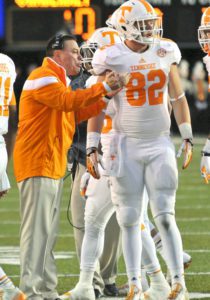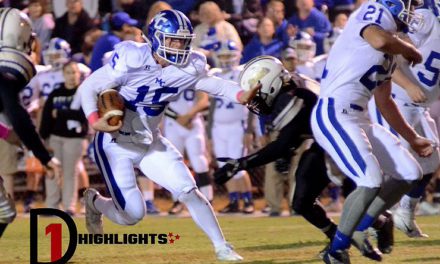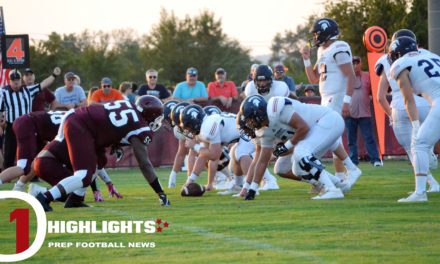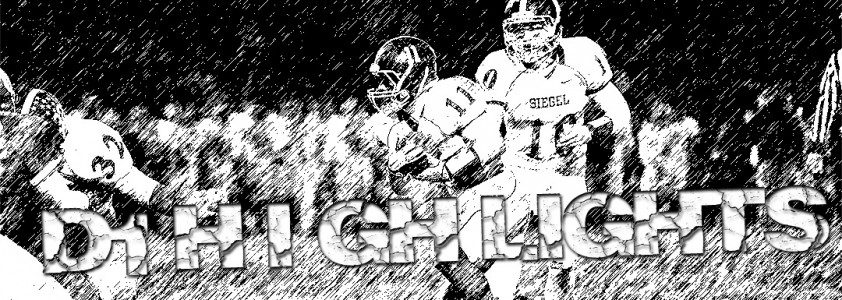How to Become a Sports Photographer
by. Evan Butler / Media Director D1 Highlights

September 22, 2013: Tiger Woods awaits to hit his approach shot on hole number ten at the Tour Championship in Atlanta Ga (Evan Butler)
After ten years of being a freelance graphic designer and buying stock photos to complete projects I decided it was time to start creating my own stock photos to save some money. My first DSLR, after long debate with myself over which one to buy, was a Nikon D5000 with a kit lens. I was bit by the shutter bug right after the first shot I took. My interest in becoming a sports photographer was sparked by the fact that sports photographers always look cool on the sidelines carrying their massive lenses and multiple bags. I also figured it would be a good way to get into some big games but I had no idea how much work actually went into it.
I was fairly disappointed after trying to photograph my 8 year olds basketball game in what I thought was a well lit gym and came home with only blurry and dark images. Even in gyms that look like they’re lit well to the naked eye they are not usually the best lighting scenario for sports photography, which requires fast shutter speeds and large apertures. Sports photography calls for some seriously expensive gear, but work with what you have until you can afford to buy better equipment. There’s no sense in having top of the line cameras and lenses unless you’re making top of the line money. I determined that the first thing that I needed to invest in was a 70-200mm f2.8 lens. It was $900 (at the time) to buy a used one. By the time soccer season rolled around I had become familiar enough with my camera and lens to turn out some good shots of my kid’s soccer team. Eventually I upgraded to a D300, which has a faster frame rate and better ISO performance.
I had the desire to try my hand at some high school football games. I also begin to search the web to find out how to get

November 29 2014: Butch Jones calls for his team during a timeout at Dudley Field, Vanderbilt Stadium in Nashville TN (Evan Butler)
into college and professional games. The person that is in charge of press coverage at sporting events is usually the A.D. (Athletic Director) of that schools program. I found that a simple e-mail stating your purpose for wanted to photograph the games, whether it is for experience or for profit, is the best way to gain access for photographing the games. Take the time to e-mail several schools and usually one or two will respond. For myself personally, once I was confident enough in my skills I began contacting every small and large collage in the area asking permission to photograph their sporting events. Once I had enough images to make a portfolio I started submitting my work to local sports editors looking for a paying gig. Sadly I found that in today’s fast paced world of digital photography and a declining need for full-time staff photographers most editors were not interested in hiring me on staff. They all suggested that I look into freelance wire providers.
After searching and researching what a wire provider was, I quickly realized why there were very few staff photographers left. Any editor around the world could quickly log into and search for any current image they wished for through wire providers like: Getty Images, A.P. Images and South Creek Global just to name a few. Competition is stiff amongst freelancers looking to have their images promoted by wire services for sale. A year or so went by of submitting my portfolio to wire providers to review before A.P. Images finally decided to give me a shot at providing images for them. I hit the fields with enthusiasm shooting any collegiate event that would allow me. The down side about shooting freelance is that you have to make your own way into the events. Most large d-1 colleges and professional sports organizations reserve their media access for staffed members of the press or staffed members of a wire provider. It helps to be persistent yet professionalabout gaining access to the sidelines of a game as a freelancer. Always remember to personally thank the person responsible for allowing you to photograph their sporting event.
Owning your images is an important key to making a sensible income from your images. When you have the freedom to submit your work to several wire provides, sports editors and still be able to sell your work from your own site you maximize your potential for steady income. Most wire providers only pay out commissions quarterly. Find a way to supplement your income from providers with other sorts of photography. Shooting little league team photos, portraits and selling prints are how I decided to supplement my income. Parents are the biggest fans of their children and love to have photographs of them playing sports. Come up with a business plan for your services and have the business sense to present it to league officials. Selling prints now days is easier than ever with services like Zenfolio that allows your customers to pick the photos they like, order and have them delivered directly to their house without you ever having to touch a print. Don’t be afraid to start of small and work your way up but on the same hand don’t be afraid to go for the big time shoots. Carry yourself and your business like a pro and one day you will be one.




